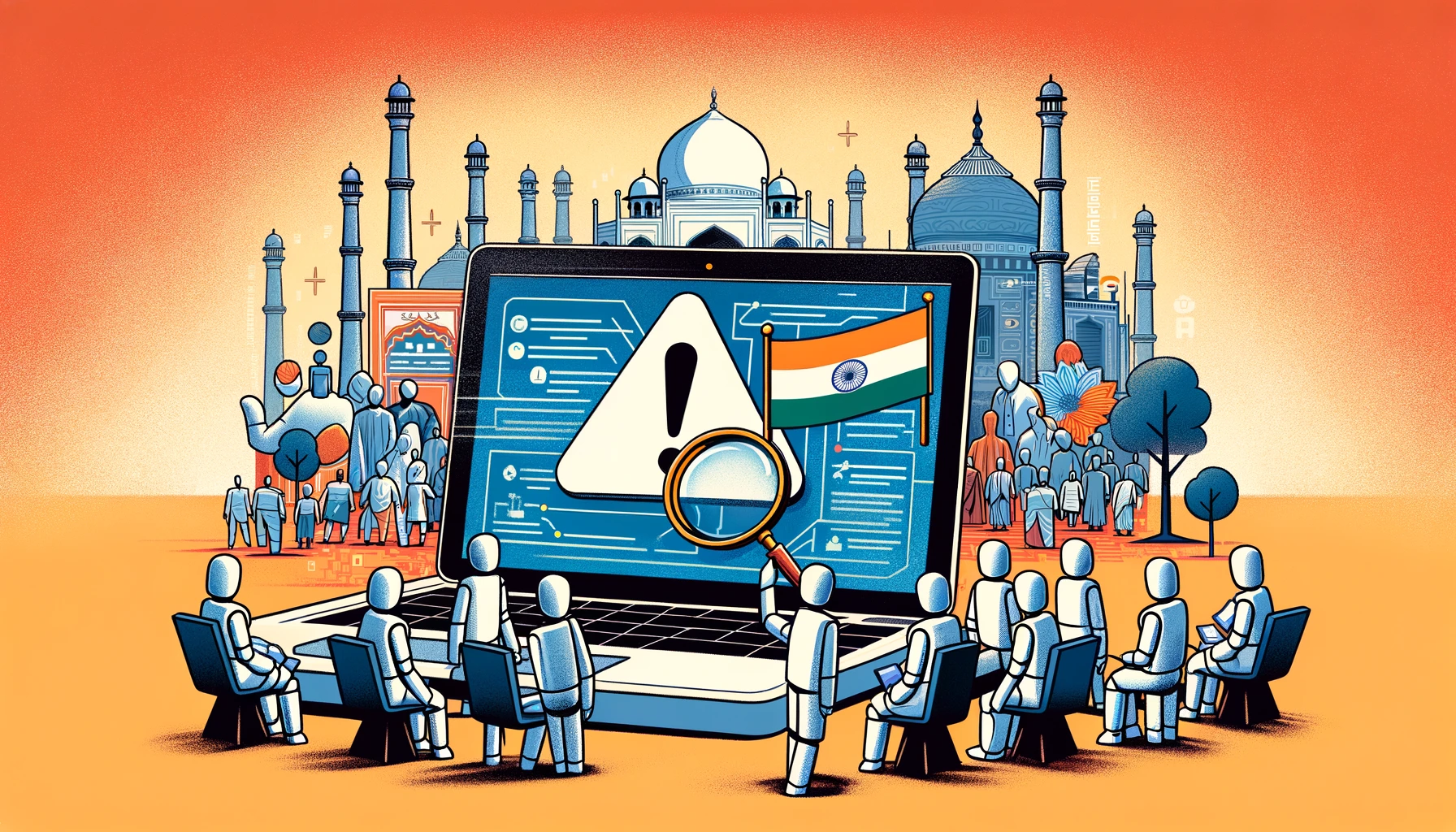
In the rapidly evolving landscape of artificial intelligence (AI), the debate around the authenticity and ethical use of AI-generated content has become a global concern. With India emerging as a critical battleground for AI’s role in political discourse and the democratic process, a new initiative seeks to establish a standard for AI content, aiming to bolster transparency and trust.
India’s engagement with technology, especially in persuading public opinion, is not new. However, the country has recently garnered attention as a hot spot for the use and misuse of AI in political arenas. As AI technology weaves its way into the fabric of political campaigns and public discourse, the need for accountability and transparency in AI-generated content has never been more pronounced.
Tech companies, the architects of these AI tools, have found themselves at the center of this debate. Their solution? To champion tools and standards that can sift through the digital content deluge, marking out what’s authentic and what’s not.
A notable figure in this movement is Andy Parsons, a senior director at Adobe, who oversees the company’s participation in the Content Authenticity Initiative (CAI). Parsons’ recent visit to India was more than just a routine check-in. It was a mission to advocate for tools that integrate seamlessly into content workflows, offering a beacon of authenticity in a sea of digital misinformation.
“Instead of focusing solely on detecting fake or manipulated content, we need to pivot towards declaring what’s authentic,” Parsons emphasized in a discussion about the shifting paradigm. His vision is clear: If a piece of content is AI-generated, that fact should be transparent to consumers.
This approach isn’t without its backers. Parsons revealed that several Indian companies are considering forming an alliance similar to the Munich AI election safety accord—a testament to the global resonance of the need for AI transparency.
Legislation around AI use is a tricky landscape to navigate. Parsons advocates for a measured governmental approach, hinting at the complexities and rapid changes in AI technology that make swift, effective legislation a challenging goal. Despite this, the push for authenticity standards like those championed by the CAI and its offshoot, the Coalition for Content Provenance and Authenticity (C2PA), provides a beacon of hope.
The C2PA, co-founded by Adobe and partners like ARM, BBC, and Microsoft, aims to develop an open standard tapping into the metadata of media to verify their origins and alterations. This initiative is not just about creating a safer digital environment; it’s about fostering a culture of transparency and trust.
India’s digital narrative is complex and multifaceted. From Google using India as a testing ground for AI application in elections to Meta establishing a deepfake helpline for WhatsApp, the country is at the forefront of addressing AI’s challenges and opportunities.
In March, the Indian government’s decision to relax AI model development and deployment rules was a double-edged sword. While intended to boost AI innovation, it also raised concerns about safety and ethics in AI use.
Adobe’s involvement, particularly through its Content Credentials feature across creative tools, underscores a commitment to embedding authenticity in digital content creation. The “digital nutrition label” for content, as developed by the C2PA, is a step towards demystifying content origins for consumers.
Adobe’s stance on AI is unique. While not directly developing large language models (LLMs), Adobe’s dominance in creative software places it in a pivotal role in the AI content ecosystem. By integrating AI capabilities into its products, like the AI model Firefly, Adobe is not just adapting to a changing market—it’s seeking to lead it, with an eye on ethical considerations.
India’s vast demographic and linguistic diversity makes it an ideal, though challenging, laboratory for AI’s societal impacts. Parsons’ emphasis on simple, understandable labels for AI-generated content reflects a nuanced approach to navigating India’s complex information landscape.
In election years, the authenticity of content released by political entities becomes particularly critical. Adobe’s push for international standards adoption in India is not just about technology; it’s about safeguarding democracy.
AI Standards Initiative Highlights
| Initiative | Founded | Key Members | Objective |
|---|---|---|---|
| CAI (Content Authenticity Initiative) | 2019 | Adobe, Microsoft, Meta, The New York Times, BBC | Promote open standards for content authenticity. |
| C2PA (Coalition for Content Provenance and Authenticity) | 2021 | Adobe, ARM, BBC, Intel, Microsoft, Truepic | Develop standards for verifying content origins and alterations. |
Behind the push for AI safety and authenticity standards lies a complex interplay of motives. Critics question whether these initiatives stem from a genuine concern for societal welfare or are strategic moves to shape the regulatory landscape to tech giants’ advantage. Parsons, however, sees it differently, highlighting the collaborative spirit among companies to address a shared challenge.
As Adobe and other tech leaders navigate the intricacies of AI ethics and regulation, the journey ahead is fraught with challenges and opportunities. The initiative to standardize AI content authenticity in India is more than a technical endeavor; it’s a statement about the role of technology in society and the responsibility of its creators to ensure it serves the public good.
In the end, whether these efforts will suffice in creating a safer, more transparent digital ecosystem remains to be seen. But one thing is clear: the path forward requires collaboration, innovation, and a steadfast commitment to authenticity and trust.
Related News:
Featured Image courtesy of DALL-E by ChatGPT
